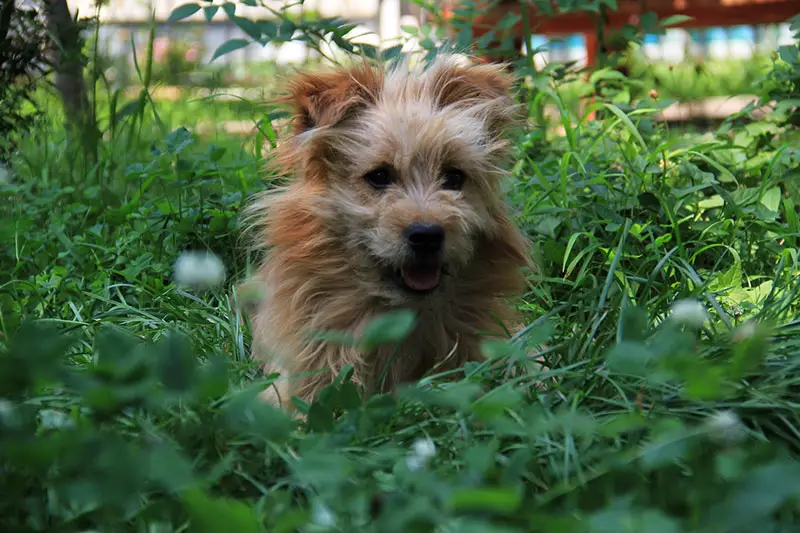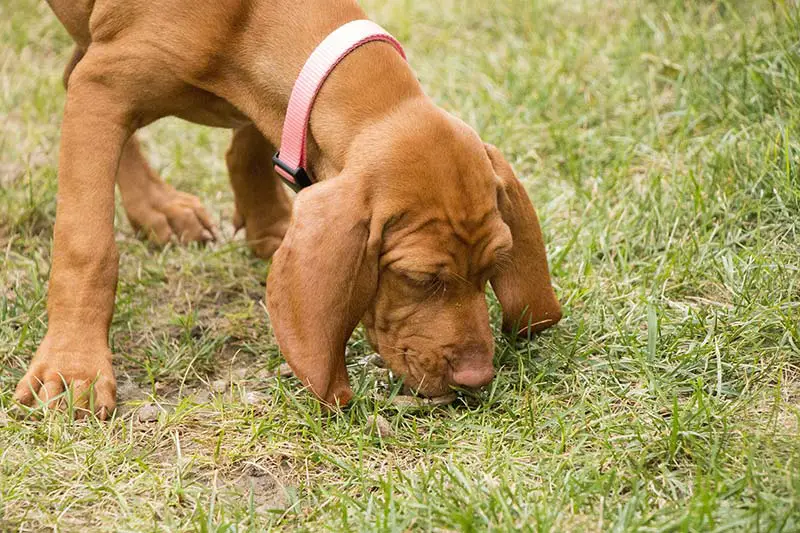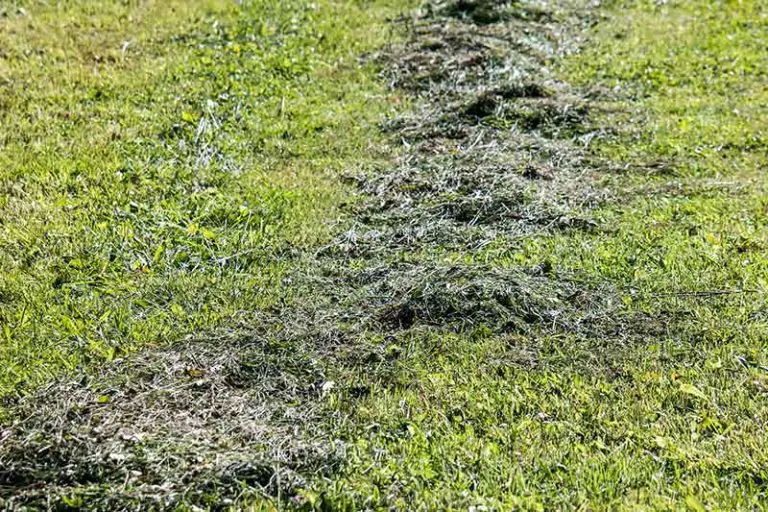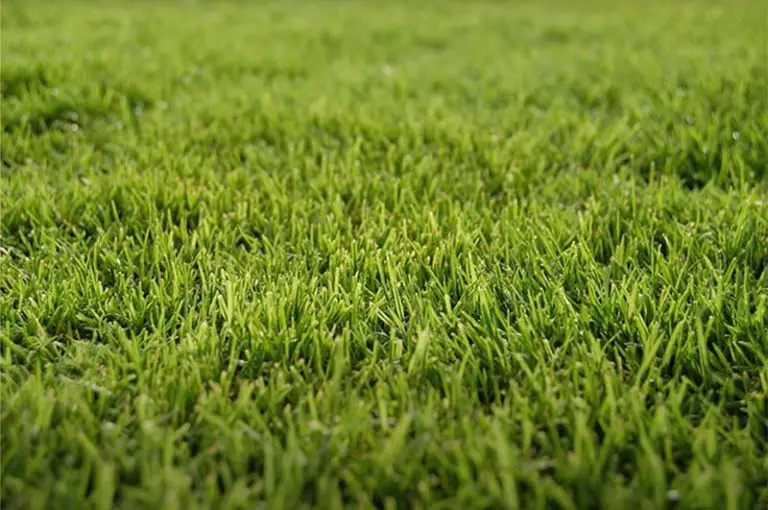How Long to Keep Dog Off Grass After Spraying Weed Killer?
As a responsible dog owner, it’s important to be aware of the potential harms of any product you use in your outdoor spaces. Herbicides are one such product; containing harsh chemicals that are toxic to plant life, this leads to the question of their toxicity to your pets.
As a general rule of thumb, you should keep dogs off grass for at least 48 hours after spraying weed killer. Most products advise that you keep children and pets away from the treated area until the product completely dries. Although this can take as little as 2 hours, it’s best to err on the side of caution; keeping all pets and people off the lawn for at least 48 hours will completely negate any potential health hazards.
What Are Weed Killers Such As Roundup?
Weed killers, like the commonly used Roundup, are substances that contain chemical ingredients toxic to plant matter. They can either be selective, only killing certain types of plants, or non-selective, meaning they kill all plant matter indiscriminately.
For instance, Roundup is a popular brand that manufactures both selective and non-selective herbicides. Both of these herbicides contain different active ingredients that work to kill weeds.
Non-selective herbicides contain glyphosate as their main ingredient. Glyphosate works to kill plants by interrupting their enzyme pathways and blocking their uptake of nutrients. This chemical destroys all plant matter indiscriminately, therefore, it’s only suitable for spot treatments of weeds on a lawn. Any grass it comes into contact with will also die due to the non-selective nature of the glyphosate.
Selective herbicides, on the other hand, contain ingredients that only destroy certain types of plants, leaving the surrounding grass unharmed. Examples of common ingredients in selective herbicides include dimethylamine, quinclorac, and dicamba.
These ingredients kill plants by targeting certain metabolic processes; as different plants have different metabolic processes, the chemicals only kill off specific species. Selective herbicides are therefore best for widespread applications on lawns as they will only target the weeds they’re designed to kill.

Is it Safe to Use Weed Killer Around Dogs?
It’s completely safe to use weed killer around dogs, as long as you follow the safety guidance for your product. Regardless of the specific type, all weed killers contain harsh chemicals that pose a potential hazard to humans and pets. It’s important to be aware of these hazards when using any herbicide on your lawn.
With all weed killer products, there will come guidance on how to use the product safely in your yard. These products can have severe consequences if people or pets come into contact with them upon or soon after application; their chemical ingredients are typically only considered to be dangerous when wet, with toxicity reducing as the products dry down.
For this reason, the general safety guidance for herbicides is to allow them to fully dry before anyone uses the lawn. Again, to use Roundup as an example, this is the guidance for both their non-selective and selective herbicides. Even so, you should always refer to the packaging for the guidance specific to your chosen product.
How Long Should You Keep Dogs Off Grass After Spraying Weed Killer?
Generally speaking, you’ll need to keep dogs off grass for at least 48 hours after spraying weed killer. However, this is only to be used as rough guidance; the exact timing may vary depending on the product you use and the weather conditions at the time of application.
As we’ve just mentioned, the general advice for using weed killers is to wait until the product fully dries before any person or pet uses the lawn. It could take as little as 30 minutes to 2 hours for the lawn to dry under normal conditions; if it rains or the grass gets wet for any other reason, the lawn could take much longer to dry.
With this in mind, you should wait a full 48 hours before you let your dog use the lawn. This is best practice as erring on the side of caution is better than risking your pet’s health. You must also be mindful of keeping pets and children away from the lawn during the herbicide’s application; the product may drift and land on anyone near the application site. Make your yard a no-go zone from the moment of application and throughout the next couple of days afterwards.
What Are the Symptoms of Herbicide Poisoning in Dogs?
Common symptoms of herbicide poisoning in dogs include skin irritation, fever, vomiting, diarrhea, labored breathing, hypersalivation, and lethargy. If you suspect your dog has come into contact with or ingested weed killer, you may notice these symptoms.
Skin Irritation
If any part of your dog’s body comes into contact with the herbicide, it can cause irritation in these areas. You may notice irritated skin on their paws, tummies, or around their mouths or eyes.
Fever
If your dog ingests the herbicide, they may develop a fever; in dogs, this is any temperature above 103°F. The best way to take your dog’s temperature is to use a thermometer; otherwise, you can use your hand to feel inside their ear. They may have a fever if their inner ear feels very warm to the touch.
Vomiting
Vomiting is one of the most obvious symptoms of herbicide ingestion in dogs. They will vomit in order to flush their system of the toxins they ingested via the weed killer. Even though this is upsetting to see, a lot of vomiting is actually a good thing; the dog’s body is rejecting as much of the toxins as possible before they suffer more severe damage. However, vomiting can lead to severe dehydration and is also just a stressful experience for your dog to go through.
Diarrhea
Another common symptom of dogs ingesting weed killer is diarrhea. Their stools will be looser and they will likely need to ‘go’ much more often than usual. This is another way in which the dog’s body is trying to expel the toxins they have ingested. Again, excessive diarrhea can result in your dog becoming severely dehydrated.
Breathing Difficulties
Your dog may exhibit breathing difficulties if it ingests herbicide. They may have labored breathing, such as excessive panting or gasping for air.
Hypersalivation
Hypersalivation is another sign of herbicide ingestion in dogs. You may notice that the dog is drooling excessively; if your dog is already a drooler, it may be the case that they produce much more saliva than usual.
Shaking, Seizures, or Muscle Weakness
The chemicals in herbicides, primarily the organophosphates, can cause shaking, seizures, or muscle weakness in dogs. These chemicals attack the connections between the dog’s nerve endings in their muscles; consequently, this causes the muscle fibers to spasm and twitch. Look out for your dog showing any signs of unusual or involuntary movements if you suspect they’ve ingested herbicide.
Loss of Appetite
In the days or weeks following herbicide ingestion, your dog may experience a loss of appetite. Monitor your dog’s eating habits and take note of any changes in their appetite if you suspect herbicide ingestion. As a general rule, if your dog refuses to eat for 18 to 24 hours, take them straight to the vet.
Lethargy
The accidental ingestion of herbicide may cause behavioral changes in your dog, like lethargy or depression. This can manifest in a few different ways, like appetite loss, little interest in toys and playing, or being sleepy or low-energy.

What to Do if Your Dog Ingests or Walks on Weed Killer
There’s always a chance that your dog may ingest or otherwise come into contact with the weed killer. Accidents happen, and you must be ready to take action when they do.
What to Do if Your Dog Comes into Contact with Weed Killer
If your dog walks upon or touches grass treated with weed killer, it may be on their fur, paws, or skin. You must immediately decontaminate them to avoid external or internal symptoms that arise from the chemicals; not only can it irritate their skin, but they may also ingest the herbicide by licking it while grooming themselves.
You must therefore get your dog to a hose or shower straight away if they’ve come into contact with herbicide. Put on a pair of gloves to protect your own hands, then give your dog a thorough wash and rinse. While you’re washing them, check over your dog for signs of skin irritation or ulceration. It’s also a good idea to get in contact with your vet for advice following the decontamination.
What to Do if Your Dog Ingests Weed Killer
If you suspect your dog has ingested weed killer, you must take them straight to the vet. As per our advice above, symptoms of herbicide poisoning include fever, vomiting, diarrhea, labored breathing, hypersalivation, and lethargy. Noticing one or more of these symptoms is an indication that your dog has accidentally ingested the weed killer.
Contact your vet and take your dog for an appointment as soon as possible. It may be necessary to contact an emergency out-of-hours vet if your dog is showing signs of serious poisoning.







